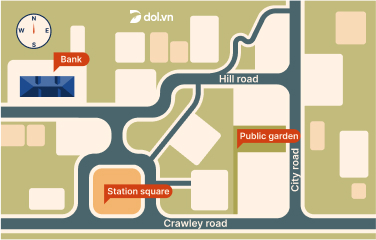Cambridge IELTS 12 - Listening Test 4 With Practice Test, Answers And Explanation
Luyện tập đề IELTS Online Test Cambridge IELTS 12 - Listening Test 4 được lấy từ cuốn sách Cambridge IELTS 12 với trải nghiệm thi IELTS trên máy và giải thích đáp án chi tiết bằng Linearthinking, kèm answer key và list từ vựng IELTS cần học trong bài đọc.
Section
👂️ Bài nghe section 1
Wants a
job1
Will soon start work as a
2
Has led cycle trips in
3
Interested in being a leader of a cycling trip for families
Is currently doing voluntary work with members of a
club4
Available for five months from the 1st of
5
Can’t eat
6
Address: 27
Place, Dumfries7
Postcode:
8
Interview at 2.30 pm on
9
Will plan a short
about being a tour guide10
❓ Tapescript section 1
🔥 Đáp án & giải thích section 1
Giải thích chi tiết
 Loại từ cần điền: adjective, là một từ có thể collocate với job như là part-time, full-time, permanent, etc.
Loại từ cần điền: adjective, là một từ có thể collocate với job như là part-time, full-time, permanent, etc.
 Nghe thấy câu hỏi are you looking for a permanent job
Nghe thấy câu hỏi are you looking for a permanent job
>> Chuẩn bị nghe đáp án ở câu tiếp theo
 Nghe Margaret trả lời no, temporary
Nghe Margaret trả lời no, temporary
>> Đáp án là temporary 
Section
👂️ Bài nghe section 2

❓ Tapescript section 2
🔥 Đáp án & giải thích section 2
Giải thích chi tiết
 Nghe tới keyword fastest-growing (= most rapidly-growing)
Nghe tới keyword fastest-growing (= most rapidly-growing)
>> Chuẩn bị chờ đáp án
 Nghe thấy the nearby university has always meant the area's popular with students
Nghe thấy the nearby university has always meant the area's popular with students
>> Đáp án có thể là B
>> Tuy nhiên sau câu này nghe thấy but
Section
👂️ Bài nghe section 3
❓ Tapescript section 3
🔥 Đáp án & giải thích section 3
Giải thích chi tiết
 Loại từ cần điền: noun
Loại từ cần điền: noun
 Nghe thấy keyword film adaptations of Shakespeare's play
Nghe thấy keyword film adaptations of Shakespeare's play
>> Chuẩn bị nghe đáp án
 Nghe thấy tên Giannetti và book
Nghe thấy tên Giannetti và book
>> Nghe tiếp thấy he came up with a straightforward classification of film adaptations
Section
👂️ Bài nghe section 4
Show that the highest noise levels are usually found on roads
Do not show other sources of noise e.g. when windows are open or people’s neighbours are in their
31
Ignore variations in people’s perceptions of noise
Have made people realize that the noise is a
issue that must be dealt with32
Sleep disturbance
Increase in amount of stress
Effect on the
of school children33
Do not get much
in acoustics37
Regards sound as the responsibility of engineers
How sound relates to
38
What can be learnt from psychology about the effects of sound
Whether physics can help us understand the
of sound39
Advantage: predict the effect of buildings
Current disadvantage: they are
40
❓ Tapescript section 4
🔥 Đáp án & giải thích section 4
Giải thích chi tiết
 Loại từ cần điền: noun, là một nơi nào đó, có thể ở trong nhà hoặc ở ngoài
Loại từ cần điền: noun, là một nơi nào đó, có thể ở trong nhà hoặc ở ngoài
 Nghe tới highest noise levels are generally on roads
Nghe tới highest noise levels are generally on roads
>> Paraphrase ý đầu của đoạn này trong đề
>> Đáp án sắp tới
 Nghe tiếp thấy quite a lot going on that these maps don't show >> trùng từ don't show trong đề
Nghe tiếp thấy quite a lot going on that these maps don't show >> trùng từ don't show trong đề


